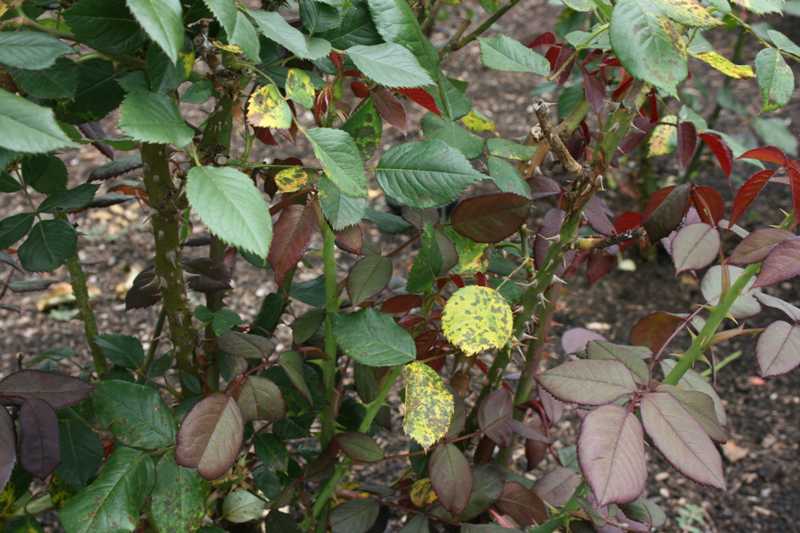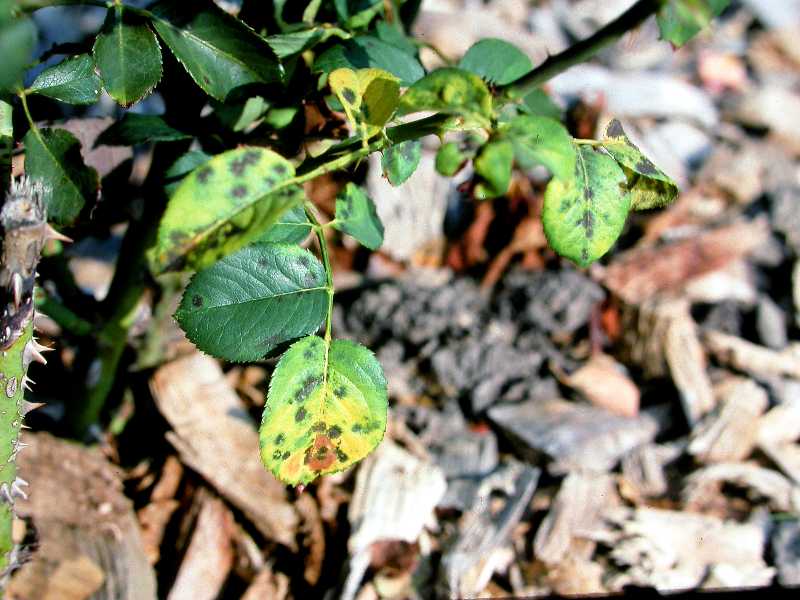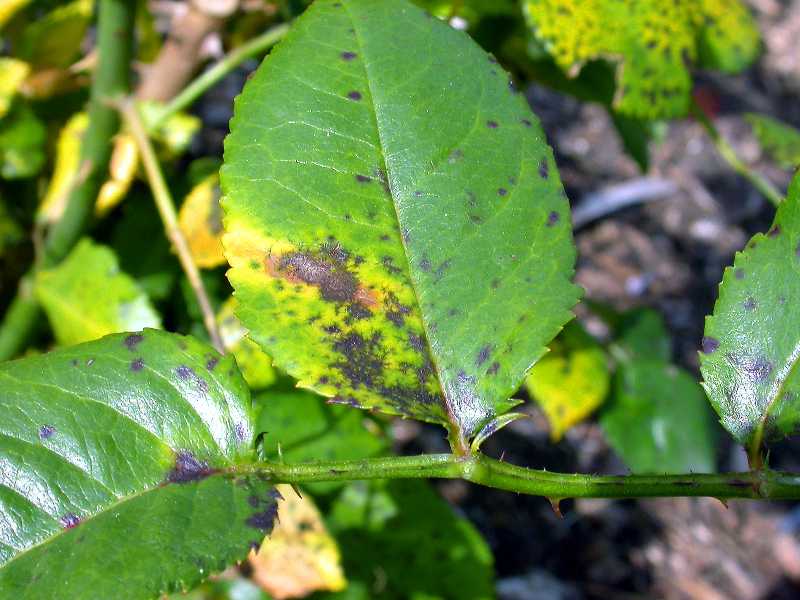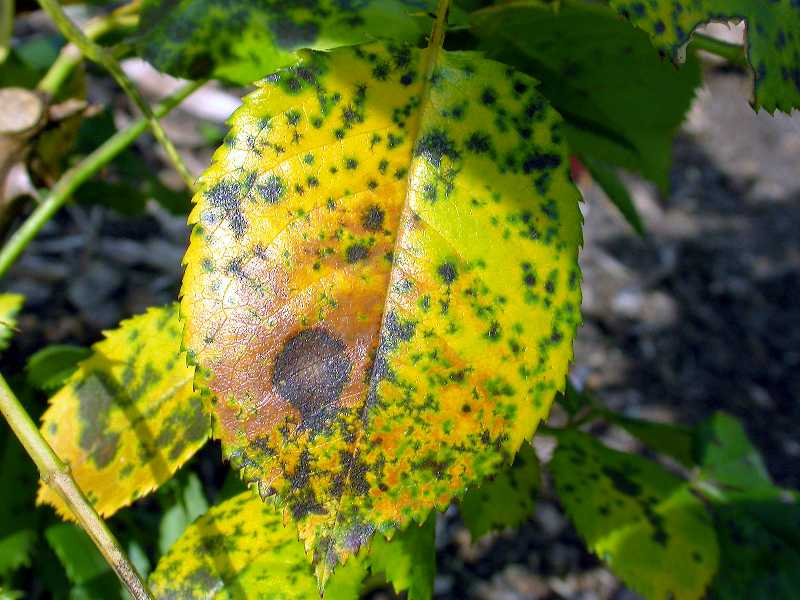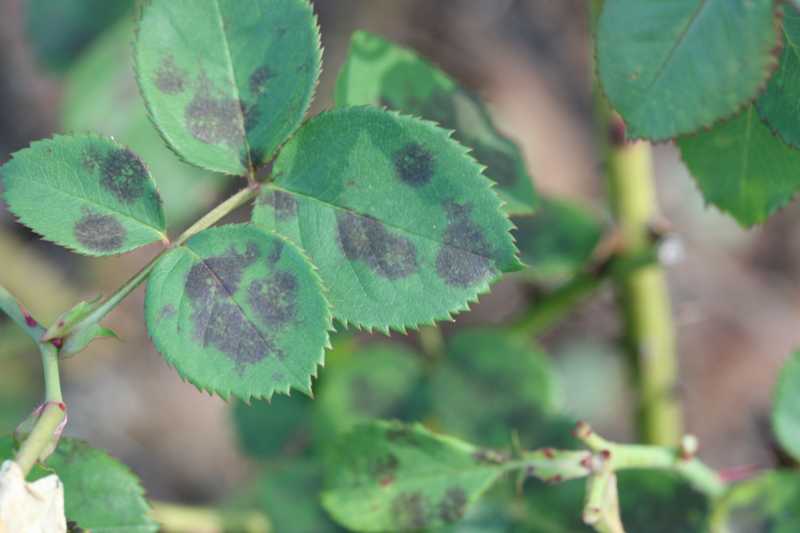Does Sweet Box Get Black Spot Fu.gus
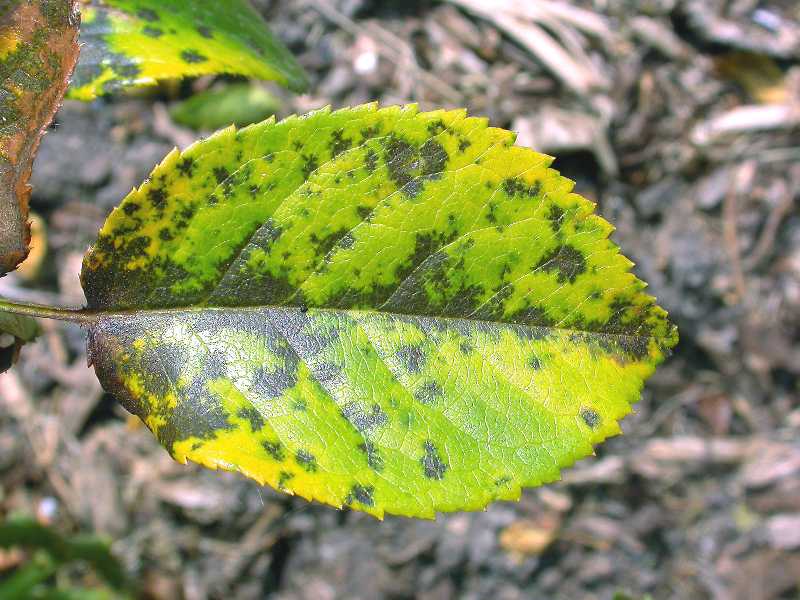 | Yellowing rose (Rosa) leaves with black spots are characteristic of black spot of rose |
Black spot is caused by the fungus, Diplocarpon rosae. It is one of the most common diseases found everywhere roses are planted. The disease does not kill the plant outright, but over time, the loss of leaves can weaken the plant making it more susceptible to other stresses and winter damage. The disease is active during cool, moist weather. Conversely, extreme summer heat during July and August will limit development of the disease.
Symptoms and Diagnosis
Black spots, one-tenth to one-half inch in diameter, develop first on upper leaf surfaces. Areas adjacent to the black spots turn yellow and leaves drop prematurely, usually beginning at the bottom of the plant and progressing upward. Less commonly, raised purple-red blotches develop on immature wood of first year canes. These spots may later become blackened and blistered.
Life Cycle
The disease overwinters in diseased canes and infested fallen leaves. The fungal spores germinate in the spring and are disseminated by splashing water. Fungal spores on the leaf surface must be continuously wet for at least seven hours for infection to occur. Once infection is established, the fungus will develop fruiting bodies called acervuli in black lesions which, in turn, produce spores that splash to new tissue, spreading the disease.
Integrated Pest Management Strategies
1. Remove diseased leaves. As soon as diseased leaves are noticed, remove and dispose of them. Dead leaves on the ground should also be collected and destroyed. Compost only if this material will not be used back in rose beds. To minimize overwintering of the fungus, collect and remove all leaves from the ground in the fall, mulch with 2–3 inches of leaf mold or fine bark, and prune diseased canes before growth begins in spring.
2. Keep the foliage dry. The fungal spores need a wet surface to germinate and cause infection. Therefore, keep the foliage as dry as possible. Do not use overhead watering, or if you do, water early in the day so the foliage is dry by nighttime. Prune plants to allow more air circulation and facilitate the drying of foliage.
3. Use fungicidal sprays. Fungicides applied as a protectant provide good control. Fungicides will not cure infected leaves, but if applied regularly, will prevent infection of new leaves. Pesticides registered for use include captan, chlorothalonil (Daconil), copper, ferbam, mancozeb, maneb, triforine (Funginex), sulfur, thiophanate methyl (Cleary 3336), and ziram. Many other products listed as rose dusts are also effective. Check the label for control of black spot. Most fungicides need to be applied every 7–14 days. Fungicides need to be reapplied following rain or overhead watering in excess of 1/4 inch.
4. Move the plants. You can limit the disease by growing roses in locations where they receive morning or, preferably, all day sun. This facilitates drying of the foliage.
5. Replant with more disease-tolerant varieties. Avoid highly susceptible cultivars, including most yellow and copper-colored roses. Roses reported to be highly resistant are: 'Fortyniner,' 'Coronado,' 'Carefree Beauty,' 'Simplicity,' 'Bonica,' and 'Grand Opera.' Ask about others at your nursery or check mail order sources.
Organic Strategies
Strategies 1, 2, 4 and 5 are strictly organic approaches. Of the fungicides listed in Strategy 3, consult the Organic Materials Review Institute (OMRI™) for appropriate organic copper or sulfur products.
More images:
|
| ||||
|
| ||||
|
|
Does Sweet Box Get Black Spot Fu.gus
Source: https://www.missouribotanicalgarden.org/gardens-gardening/your-garden/help-for-the-home-gardener/advice-tips-resources/pests-and-problems/diseases/fungal-spots/black-spot.aspx
